SUMMARY
This is AI generated summarization, which may have errors. For context, always refer to the full article.
![[OPINION] Salvaging democracy under Martial Law](https://www.rappler.com/tachyon/2021/09/rodolfo-aguinaldo.jpg)
As Filipinos now gear up for the next national elections only eight months away, we see Bongbong Marcos preening again for our sympathies and our votes. He has not even acknowledged defeat in the 2016 vice presidential elections and now he wants to run again.
Like it or not, we the older generation are reminded that it was Bongbong’s father, Ferdinand E. Marcos, who declared Martial Law on September 21, 1972 to usher in an era of corruption and abuses of human rights which the Duterte administration is trying hard to match. To remember what it was like under Marcosian rule, I invite you to read The Marcos Dynasty by Sterling Seagrave (1988, New York: Harper and Row, Publishers, Inc.).
The book sheds light on the dynasty that the Marcoses built and the plundering that they did to this country. Says Seagrave in his meticulously researched work: “The corruption detailed in the book boggles the imagination. Indeed, power corrupts; but absolute power corrupts absolutely.”
It is a searing indictment of human rights abuses, and you feel anger welling up in you as you read the chapter on “Salvaging Democracy.” It was during Marcos’ time that the word “salvaging” was invented. “The new term came into use to cover the torture, disappearance, and death of ordinary citizens. The army and Constabulary set out to discipline the population by creating an atmosphere of terror.”
Seagrave adds: “Many of the horror stories were independently corroborated by diplomats, journalists, priests, scholars, and international organizations such as Amnesty International. They are a litany of sadism, of dead rats being stuffed in mouths, of electric cattle prods jammed into vaginas, of mashed testicles, and prisoners being forced to eat their own ears.”
Seagrave, an American journalist, narrates in meticulous detail: “The army, Constabulary, Civilian Home Defense Corps, and intelligence agencies employed such methods as the “submarine,” where your head was submerged in a toilet or bucket of water; “zap-zap,” where electric shocks were applied to your genitals or nipples; “water cure,” where gallons of water were poured up your nose till you almost drowned; “baggy” where a plastic bag was placed over your head till you nearly suffocated; “butt stroking,” where you were beaten on the back with a rifle; “telephone,” where your eardrums were popped from behind with the flats of the hand; “Saigon roulette, where the torturer loaded all but one round in a revolver and fired at your legs.
And, of course, “San Juanico Bridge,” where you were forced to lie with your feet on one bed and your head on a second, and were beaten and kicked whenever you let your body sag — named after the new bridge connecting Samar to Leyte, built as a wedding anniversary present to Imelda from Ferdinand. The Marcoses called it the “bridge of love.”
Of the bullies, the archetype as described by Seagrave, was Constabulary Sergeant George Presquito on Negros island, whom Seagrave describes in colorful detail, as a “sweaty man with a big stomach, scraggly beard, and a drunken manner, even when he was sober, which was rare. He was said to have murdered 42 people personally. He liked to undress and sexually abuse women in front of their husbands or their families.”
It was Presquito and his men who one morning in July 1977 picked up Vilma Riopay, a 21-year-old catechist at the Magballo church, and brutally tormented her until she was turned into a mental and physical invalid. The case was so shocking that it appeared in newspapers and publications around the world. She had been taken to a safe house where she underwent an interrogation that included the “zap-zap,” the “water cure,” denial of sleep, and beating on her genitals.
The military created many martyrs, but few as celebrated as Edgar Jopson, the student leader who had asked President Marcos to sign a pledge that he would not violate the Constitution and seek a third term. His confrontation with Ferdinand had climaxed in the student siege of Malacañang Palace, after which Jopson was forced to flee for his life. He went underground as one of the growing numbers of grievance guerrillas.
He had never been a communist or a radical, but had been the “man of the year” of the middle-class Jaycees. Eventually, he joined the communist-led NPA, becoming one of its commanders. Jopson was captured on June 14, 1979, and underwent torture for many months. Using money given him on visiting day by his father, Jopson “befriended” a guard and escaped. He was recaptured in Mindanao in the summer of 1982, shot three times, and then later six times more to finish him off. His bloated and bullet-ridden body was turned over to his father by the Constabulary. The slaying caused an outcry in Manila, particularly at his alma mater, the elite Jesuit-run Ateneo.
The man accused by human rights groups of being “the top torturer” of the military at at the time, Captain Rodolfo Aguinaldo, is said to have tormented Edgar Jopson.
According to his accusers, Aguinaldo was a legend in his own time, feared throughout the archipelago: a man whose talents left detainees permanently disabled or mentally crippled. Aguinaldo was a Marcos favorite, a fellow llocano from Laoag. He graduated second in his class at the Philippine Military Academy in the late 1960s. He received special training from American army and CIA instructors in the fine art of extracting information.
According to a study of human rights abuses in the Philippines published by the Catholic Church, the sport Aguinaldo enjoyed most was having sex with the wives, sisters, or daughters of his prisoners. None of these charges had any effect on his career.
![[OPINION] Salvaging democracy under Martial Law](https://img.youtube.com/vi/nvcbLoMzSoU/sddefault.jpg)
Postcript
If the reader questions the veracity and amount of detail in this book, consider the following: The amount of research that Seagrave organized for this book is massive and impressive. He enlisted the help of literally hundreds of investigative reporters and researchers all over the world, and the help of professional researchers to organize and assemble the data.
The mass of data was collated and fed into two computers. Added to this were other field reporting, interviews, and research done by the author in Europe. East Asia, Australia ,and the Philippines All of these produced 27 crates of documents and resulted in a revealing computer-generated Marcos chronology nearly a thousand pages long.
Seagrave was a trained journalist who worked as reporter and columnist for the Bangkok World, St. Petersburg Times, and the Washington Post. He had written a dozen books before this magnum opus, including the best-selling The Soong Dynasty, a biography of the family that shaped modern China.
After writing for several publications, he became a freelance investigative journalist contributing to Time, Life, Atlantic Monthly and the Far Eastern Economic Review. Albeit too much detail in the book pose a challenge to the reader’s patience, we respect the painstaking research that a best-selling author like Sterling Seagrave had put into his work.
PPS: For those who cannot buy the book, a brief review of The Marcos Dynasty and five other Martial Law books is available in the book, NEVER AGAIN (To Martial Law)! A Sequel to Martial Law Jokes Atbp., by Crispin C. Maslog, 2019. Available at Solidaridad bookstore on Padre Faura, New Day Publishers, and Shopee. – Rappler.com
Crispin C. Maslog, former journalist with Agence France-Presse, is a retired journalism professor of Silliman University and UP Los Banos. His community newspaper, The Negros Express, was padlocked in 1972 during Martial Law. His editor, Roberto Pontenila, was incarcerated for three months without charges being filed. Dr. Maslog is now Chair of the Board, Asian Media Information and Communication Centre, based in Manila.
Add a comment
How does this make you feel?

![[FIRST PERSON] Experiencing the horror of Martial Law](https://www.rappler.com/tachyon/2020/09/Martial-Law-Horror.jpg?fit=449%2C449)
![[WATCH] In The Public Square with John Nery: Preloaded elections?](https://www.rappler.com/tachyon/2023/04/In-the-Public-Square-LS-SQ.jpg?resize=257%2C257&crop=414px%2C0px%2C1080px%2C1080px)
![[Newspoint] 19 million reasons](https://www.rappler.com/tachyon/2022/12/Newspoint-19-million-reasons-December-31-2022.jpg?resize=257%2C257&crop=181px%2C0px%2C900px%2C900px)

![[OPINION] The long revolution: Voices from the ground](https://www.rappler.com/tachyon/2022/06/Long-revolution-June-30-2022.jpg?resize=257%2C257&crop=239px%2C0px%2C720px%2C720px)
![[OPINION] I was called a ‘terrorist supporter’ while observing the Philippine elections](https://www.rappler.com/tachyon/2022/06/RT-poster-blurred.jpeg?resize=257%2C257&crop_strategy=attention)
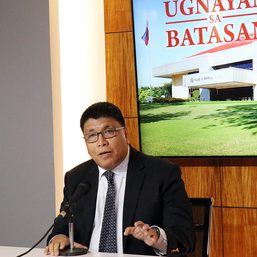
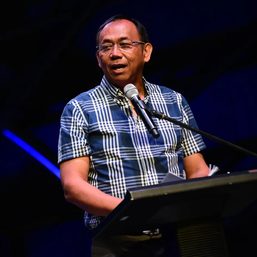
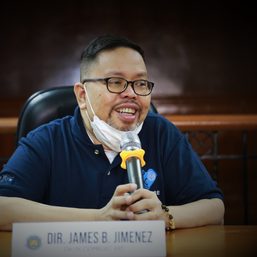
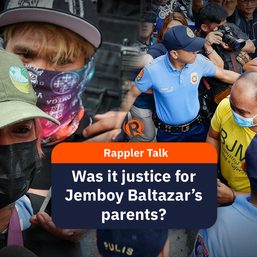
![[New School] Tama na kayo](https://www.rappler.com/tachyon/2024/02/new-school-tama-na-kayo-feb-6-2024.jpg?resize=257%2C257&crop=290px%2C0px%2C720px%2C720px)
![[Closer Look] ‘Join Marcos, avert Duterte’ and the danger of expediency](https://www.rappler.com/tachyon/2024/06/TL-trillanes-duterte-expediency-june-29-2024.jpg?resize=257%2C257&crop_strategy=attention)

![[Newspoint] A Freedom Week joke](https://www.rappler.com/tachyon/2024/06/20240614-Filipino-Week-joke-1.jpg?resize=257%2C257&crop_strategy=attention)

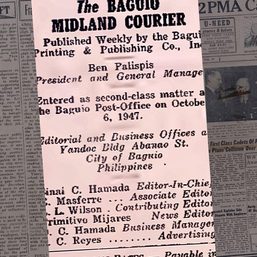
![[In This Economy] Marcos’ POGO ban is popular, but will it work?](https://www.rappler.com/tachyon/2024/07/thought-leaders-marcos-pogo-ban.jpg?resize=257%2C257&crop=255px%2C0px%2C720px%2C720px)
![[Rappler Investigates] POGOs no-go as Typhoon Carina exits](https://www.rappler.com/tachyon/2024/07/newsletter-graphics-carina-pogo.jpg?resize=257%2C257&crop=424px%2C0px%2C1080px%2C1080px)






![[OPINION] If it’s Tuesday it must be Belgium – travels make over the Marcos image](https://www.rappler.com/tachyon/2024/04/tl-travel-makeovers-marcos-image.jpg?resize=257%2C257&crop_strategy=attention)
There are no comments yet. Add your comment to start the conversation.